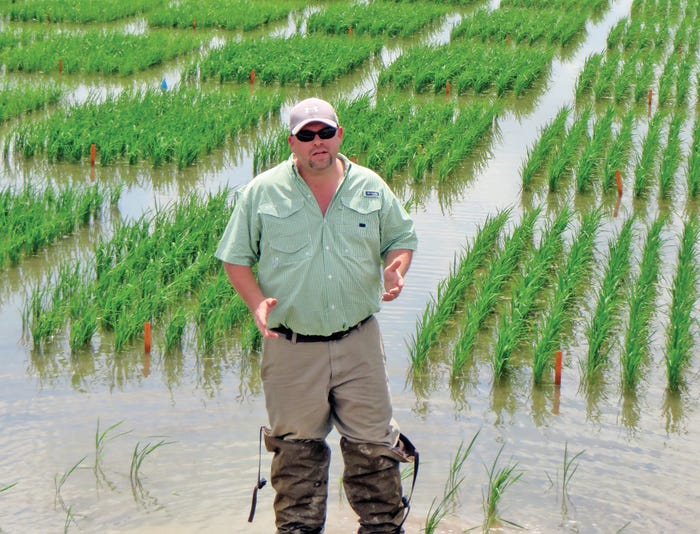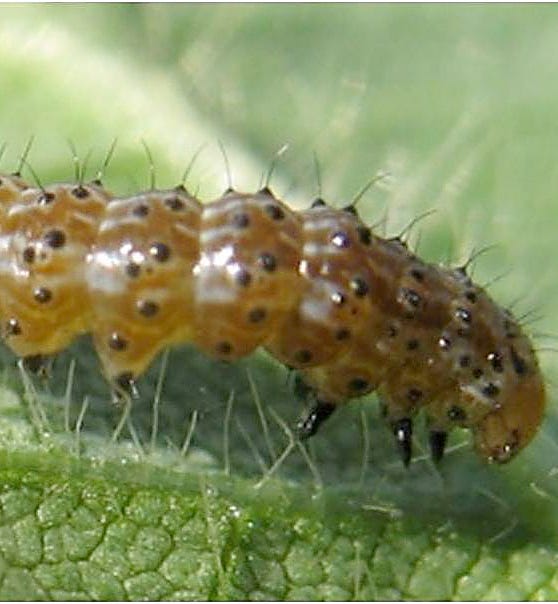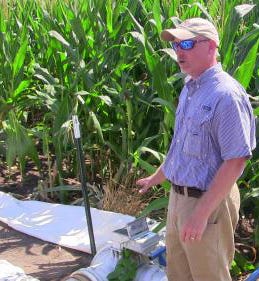June 27, 2014

Farmers gathered at the Delta Research and Extension Center in Stoneville, Miss., in mid-June for the Mid-Season Crops Field Day to hear crop updates from Mississippi State University Extension specialists and researchers.
Talk of excessive moisture dominated the day.
Jason Sarver, the new state peanut specialist, updated the crowd on peanuts. Sarver, who came from the Georgia peanut belt, believes Mississippi has a lot of potential to expand peanut production.
“We’re getting calls on yellow peanuts; this is just a function of too much moisture. We believe they’ll improve with the drier, warm weather,” said Sarver. Ten days of rain caused a hard crust. “When they finally emerged, the plants had the second set of leaves on them,” said Sarver.
Unlike other crops, peanuts attract a complex set of pests. “It makes my work interesting. We see a lot of cutworms, spider mites, corn stalk borers,” said Jeff Gore, entomologist.

Influence of rainfall on insecticide efficacy
How long before a rain do you need to spray insecticides to get acceptable control?
Over in the soybean field, MSU’s Don Cook and Angus Catchot reported a fairly quiet season for insects. “We’re seeing some stink bugs in beans, strangely in the third week of June at the early pod stage,” said Cook. As far as predictions, Catchot reported Louisiana is catching piles of moths in traps. “We’re also seeing more bollworms in non-Bt corn than we have in three or four years. I think we’re setting up for a bad bollworm year,” said Catchot.
Armyworms have been spotted since the end of May. “Here’s something to think about. They prefer grass, so if you’re killing grass right now, they’ll move over and hurt plants,” says Catchot.
In cotton, nymphs are reported over threshold, but corn borer traps are low on average. Catchot offered a final plea to producers. “If you see any white or yellow aphids, please contact us. They’re coming out of Texas and we’re documenting activity.”
Soybean specialist Trent Irby reported the bean acreage may be higher than expected. “We estimated about 2.15 million acres, but we may see 2.25 million acres. There’s a lot of excitement in beans. Ninety percent of the crop is planted, with the remaining 10 percent of the wheat-beans still to plant.”
Lyle Pringle also discussed moisture levels. “In 2011, we had a lot of moisture much like this year. In 2013, we had good yields, with 78 bushels per acre on non-irrigated beans. This year, between October and June, we’re at the same moisture level with good crop potential.”

Programing a surge valve
Check out this step-by-step guide for programing a surge valve.
Work continues on irrigation initiation dates, with specific research continuing on the soil moisture sensors. “We’re really trying to fine-tune for irrigation,” said Jason Krutz, irrigation specialist. “In some cases, we’ve discovered we’re using 47 percent more irrigation than needed. Sensors in the field saved two irrigations,” said Krutz.
You May Also Like




